|
Comparisons in Art are difficult; Art's range of content runs the gamut of human emotions. Today I give you a comparison of my drawing from yesterday to a painting by Jean-Michel Basquiat (1960-1988). This is not an easy comparison. To me, it is apt; it represents my struggle to be true to myself. I am drawn to Basquiat's extreme, forceful content, but... I am me and he is he. The one simple and obvious connection I make with this Basquiat painting is its organization. Basquiat slams you into its center panel; he grabs the the viewer with color contrast, as well as formal centering because of content that are complex and patterned shapes. Basquiat painting is a lesson in classical compositional organization. There is no getting around the effectiveness that is centering the viewer's attention through any means possible, which include large forms, strong color, obvious shapes, interesting patterns, and high value contrast. This is it. "Find a Man" is complete. This painting has yet to be recognized as a masterpiece. It is me against the world of critical viewers. Who can see "Find a Man" for what it is? I know this is a very good painting. Take a look. Make your own judgment. I know mine to be true.
There is a way to engage the viewer in a complex statement. First the viewer must be engaged through simple enticement. Yesterday's drawing was an effort in that direction. The cascading of forms engage immediately. The nuance that is within its space, and its forms, are comprehended through avid attention. This drawing gives as much as it receives. The viewer must be receptive, using his/her wandering eye, to fully appreciate the play, the intellectual and emotional qualities, inherent in this drawing.
Yesterday's drawing combines many of my interests, from round to flat to three-dimensional artifice to compositional carry-through to light and energy to contrast in value and form. The 3D deception is robust. Formally, this is a success, but is it an emotional success? I worry it feels more an intellectual achievement than a grand display of all things me, i.e., emotions and intellect. Not to worry; this is merely a step along to way to all-inclusiveness.
Am deluding myself? Or...is my work is getting stronger with every effort? I believe this: The unknown essence that is my understanding of art-making, the art I am compelled to make, is increasing rapidly; my unknown is becoming known! Yesterday's drawing is formally robust, emotionally translucent, intellectually satisfying. This drawing steps in the direction that is solely mine. Seeing it trumpets fulfillment, but not finality of fulfillment.
I like this drawing very much. But the painting, Doublethink, is me in doublethink. It is full questions, most of them unanswered. I love the time I have to doublethink, triple-think, think-a-myriad. Life is good.
Entrance must have immediacy. My drawings are beginning to understand this. Today's drawing does this well. Doublethink disturbs because that red form separates itself. It is looking for coherency. This may come through atmospheric effects or through formal effects. I am unsure. Not being sure is exciting. It means testing and questioning and finding answers not known before. Life is good. Rules have been made because history has been made. I grew up with intense interest in visual arts, especially painting and drawing, I studied art history. I looked for models. I looked for information. I gathered it, assiduously and thoroughly. Here I am, playing differently than any model I have ever seen in art history, or in contemporary art. I am myself. Yet, I have not rid myself of the laws I learned from art history and from art school studies. Yesterday's drawing is amazing in its play with form, composition, mark-making, value-contrast, atmospheric and local effects; but it has a deep foundation in the stuff that came before. Is this good or bad? That is a question I continue to answer. This is the process! I have established myself as myself. Now I question the validity of my answers. I am wondering, "Is this drawing remarkable because it plays with rules I invented myself?" OR "Is this drawing just another variation on the rules I have been given by those who made art before me?" Question #2: "Does it matter?" I need to know. Thus I proceed.
One more worry: Is my work too complicated, too subtle? Is it beyond the grasp of most viewers? I see visual connections across wide expanses of canvas and paper. I do not think I am deluding myself. Yesterday's drawing does work well. There is a solid core, there are rhythms and rhymes, there is movement and motion, there is value contrast, there are a large variety of forms, there is light, there is structural integrity. So, why is it not a hit? I believe it does hit well. Then why are viewers not begging that it be put in public venues? What are they not begging to see it up close and personal? Art that speaks truth should be seen. Perhaps Vincent Van Gogh wondered the same.
In yesterday's blog I quoted a New York Times article from March 22, 1992. The following paragraph, from the same article, is relevant to my worries of today: "Cezanne's career might have been as grim as Van Gogh's -- and as short -- had he not been the son of a banker and, ultimately, his heir. As it is, his progress from clumsy Expressionism to a sublime fusion of the monumental and the ethereal has attracted scholars from Roger Fry to Meyer Schapiro and John Rewald." (from the New York Times article, ART; How Cezanne Evokes a Bach Fugue, published March 22, 1992) There is a lot of art being made today that is plain vanilla. It is what is expected. Perhaps it has always been this way. The vast majority of artists have always repeated that which is given them. They follow the present day cultural norm. In many cases it is good art. It exudes the dictums of well known principles. Not every person can do this. It takes talent. Thus is the separation of the talented academic from the common artist. I am hoping I am not simply an academically talented artist. I am hoping I am the artist who sees the making of pictures as an experiment in wonder. Thus appears the risks I took yesterday. I am aiming at substance discovered, not substance known. I believe the painting 2017 No.9 is made as discovery. I have never seen anything like it before. It speaks truth to me. That is its importance.
Yesterday's drawing also surprises me. Even though it feels mostly made from formula. There are five standing objects. All on solid ground: normal space, punctuated by forms. In spite of this normalcy, these forms have interesting qualities. Each is well drawn. The viewer perceives all sides of them, even the surfaces that are in deep shadow, This is an academic success! It proves there is validity in art made mundanely. I may have written disparagingly of this kind of art in the first paragraph of today's post, but here is a drawing saying OK. Yesterday's drawing is me better realizing my roots. The drawings from the previous two days of studio activity look and feel wrong. Wrong in the sense that those previous drawings appear too figuratively attached. I believe they are good drawings. Good in terms of all things formal, i.e., composition, value and size contrast, use of scale, the use of light and the third-dimension. Confusion is easy. Clarity is hard. The clarifying factor was the beginning of the painting 2017 No.9. It feels right. The struggle today is to keep it right. This is the discipline that is necessary in order to be successful in this game of making art
|
To read my profile go to MEHRBACH.com.
At MEHRBACH.com you may view many of my paintings and drawings, past and present, and see details about my life and work. Archives
April 2024
|
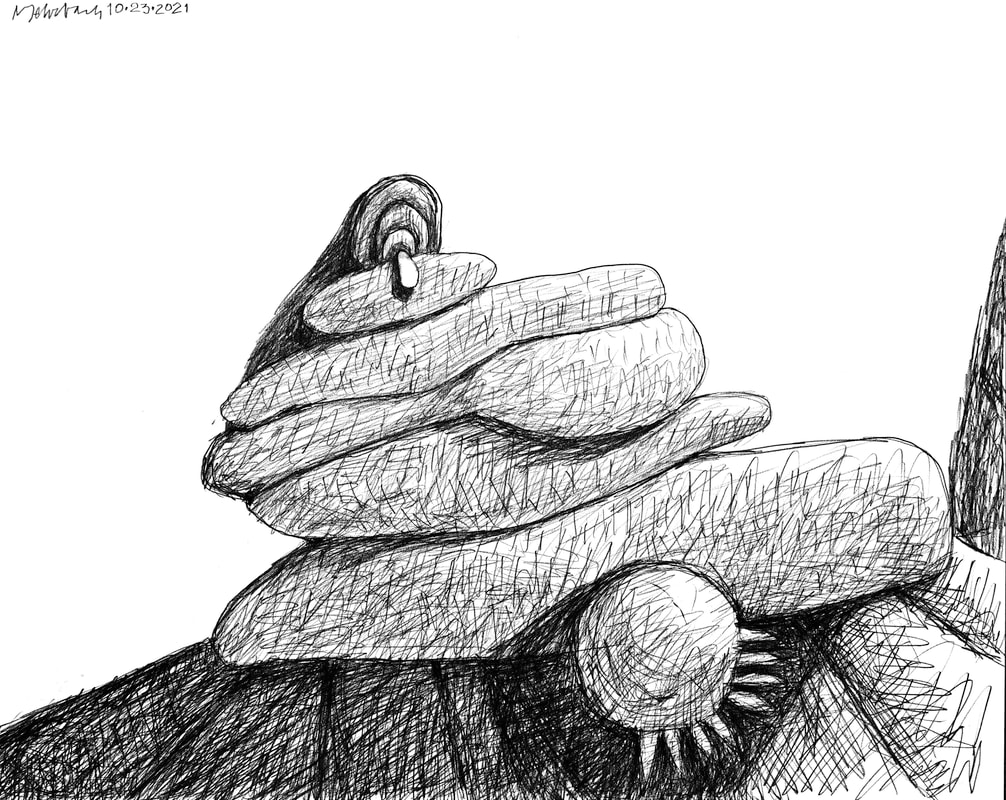

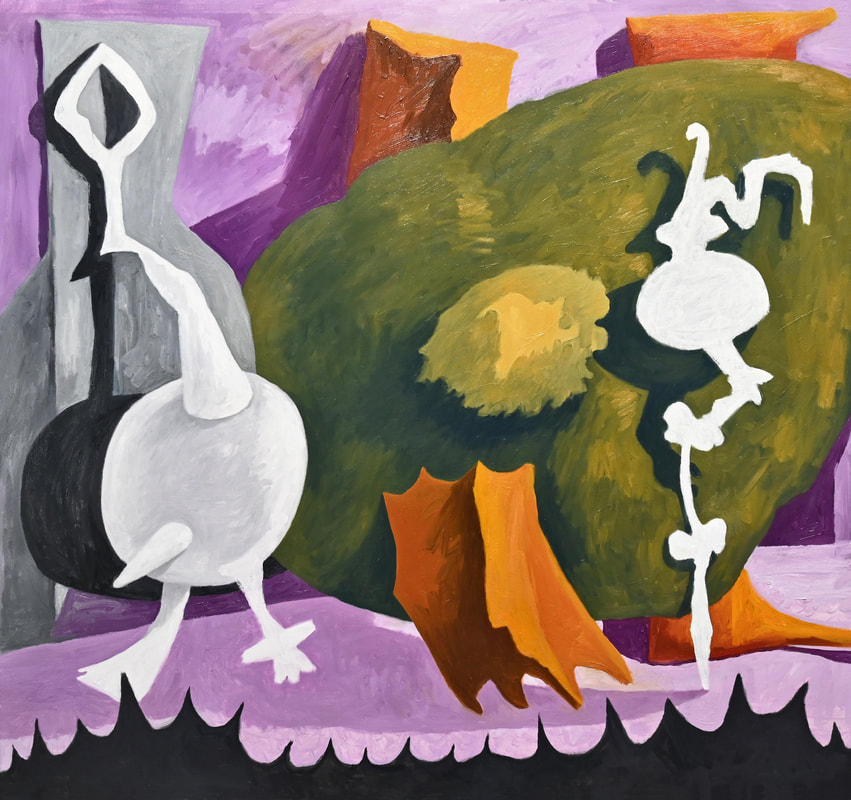
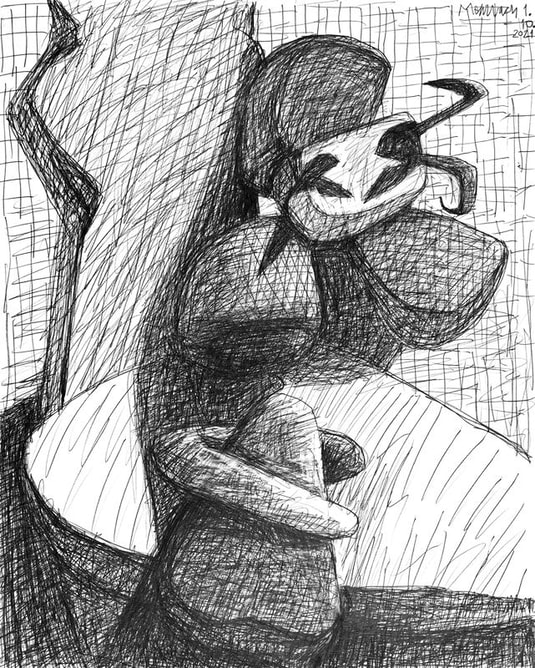
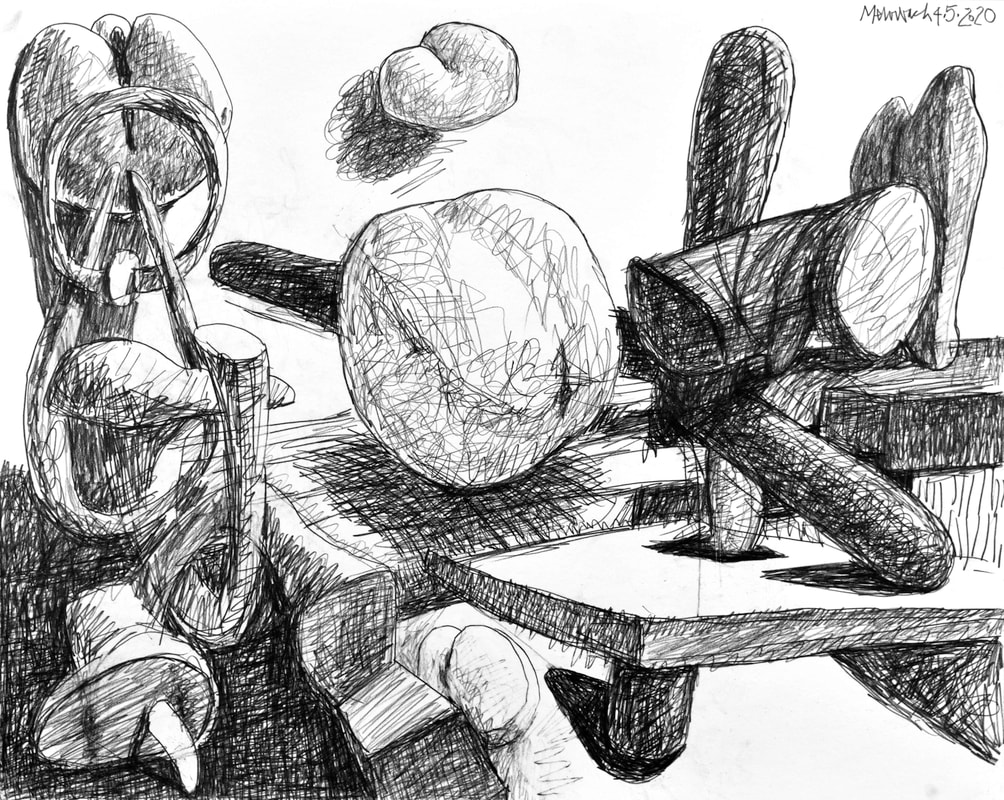

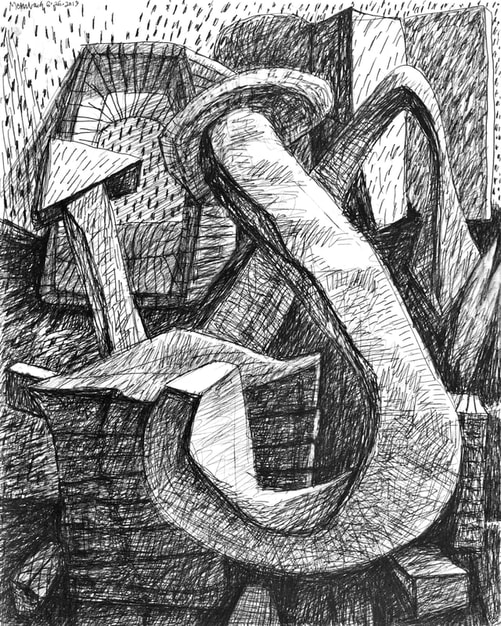
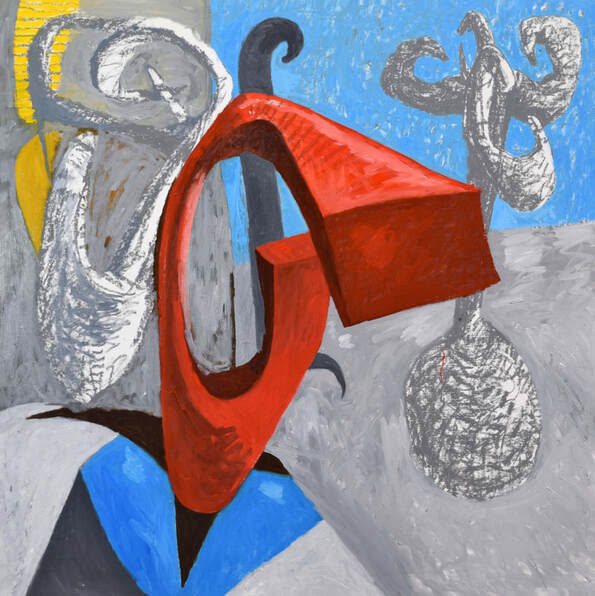
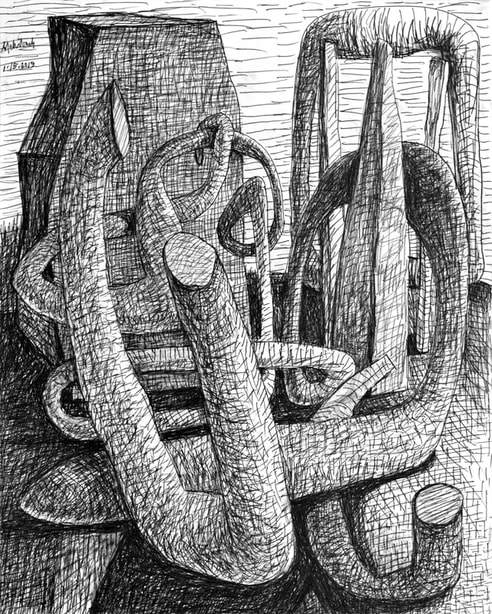
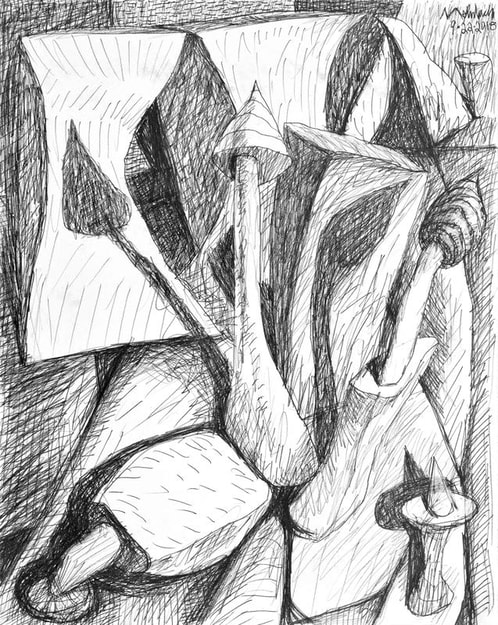
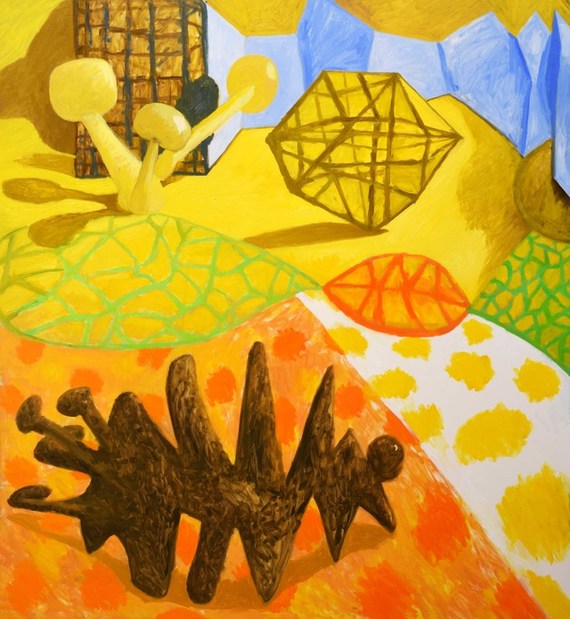
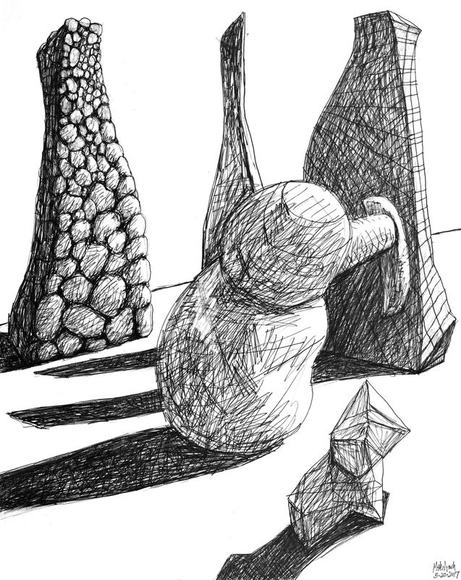
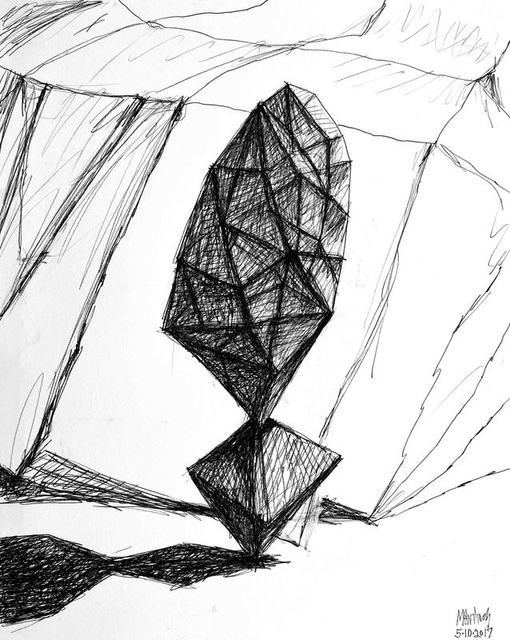
 RSS Feed
RSS Feed